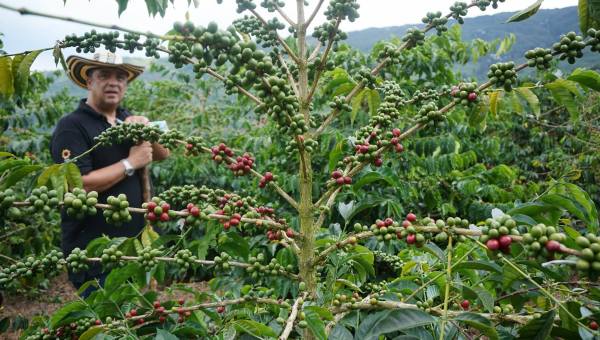CO2 decaf treatment of Colombian decaf coffee

For professional baristas, please follow the coffee workshop (Wechat official account cafe_style)
Product introduction
I. solvent extraction
1. Direct extraction method:
The raw coffee beans are softened and then heated with high temperature (pressure) steam to expand the bean surface to increase the contact area of the raw coffee beans, then pour in the dichloromethane solvent, let the beans come into contact with the solvent, and extract the caffeine from the coffee. Dichloromethane is used to adsorb the caffeine dissolved on the bean surface, but this method is less likely to affect the flavor of the coffee bean itself.
two。 Indirect extraction method:
First, the raw coffee beans are softened, and then the raw coffee beans are poured into boiling water for several hours. In this step, caffeine and many flavor elements are extracted into the water, and the solution becomes the essence of the coffee. The water is then separated from the coffee beans by adding dichloromethane or ethyl acetate. The chemical molecules will decompose the caffeine in the water, and then heat it to make it evaporate. The final flavor liquid is then introduced into the coffee beans to reabsorb the coffee oil and aroma. "although it is indirect extraction, it is easy to lose the flavor of coffee."
II. Swiss Water treatment method
After soaking the raw coffee beans in warm water, caffeine and other ingredients are dissolved in the water, then filter the caffeine in the flavor water with activated carbon, and then guide the non-caffeinated flavor water back to the previous coffee beans, allowing the coffee beans to reabsorb the lost ingredients.
This method emphasizes that caffeine is not extracted with any chemical solvent, but although it is not extracted with chemical solvent, some nutrients in coffee are filtered by activated carbon, resulting in the loss of some flavor of coffee!
III. Carbon dioxide high pressure extraction
'supercritical carbon dioxide'
First use dry supercritical carbon dioxide to extract the aroma components of roasted coffee beans, then use water-containing supercritical carbon dioxide to remove caffeine from coffee beans, and finally put the previously extracted coffee flavor back into non-caffeinated coffee beans. From the above steps, it can be found that supercritical carbon dioxide can go deep into the interior of coffee beans because of its high permeability and low surface tension. the removal of caffeine in this way will not cause damage to the coffee beans, the color will not change, and it is not easy to extract substances other than caffeine, which can retain the original flavor of coffee beans, but it can only be done in a special high-pressure environment.
Important Notice :
前街咖啡 FrontStreet Coffee has moved to new addredd:
FrontStreet Coffee Address: 315,Donghua East Road,GuangZhou
Tel:020 38364473
- Prev

El HIU Heart-shaped Farm Sun-baked Pacamara Flavor Introduction Cup Test Results
Professional barista exchanges, please pay attention to coffee workshop (Weixin Official Accounts cafe_style ) El Salvador HIU heart-shaped farm Pacamara sun beans El Salvador is the smallest country in Central America and the most densely populated. The main crop in most regions is coffee, but don't forget its existence because of its mini. In El Salvador, 60% of coffee is bourbon, like
- Next

Carmen Estate Carmen Farm in Panama
Professional baristas exchange please follow the coffee workshop (Wechat official account cafe_style) Panama Carmen Estate Carmen Farm has established a special, exquisite trend, Panamanian Coffee! Introduce clearer, better, more diverse Panamanian beans to add to the coffee journey. These beans, whether they are honey treatment, water washing or sun drying, are all after a bumper harvest in the harvest season.
Related
- Does Rose Summer choose Blue, Green or Red? Detailed explanation of Rose Summer Coffee plots and Classification in Panamanian Jade Manor
- What is the difference between the origin, producing area, processing plant, cooperative and manor of coffee beans?
- How fine does the espresso powder fit? how to grind the espresso?
- Sca coffee roasting degree color card coffee roasting degree 8 roasting color values what do you mean?
- The practice of lattes: how to make lattes at home
- Introduction to Indonesian Fine Coffee beans-- Java Coffee producing area of Indonesian Arabica Coffee
- How much will the flavor of light and medium roasted rose summer be expressed? What baking level is rose summer suitable for?
- Introduction to the characteristics of washing, sun-drying or wet-planing coffee commonly used in Mantenin, Indonesia
- Price characteristics of Arabica Coffee Bean Starbucks introduction to Manning Coffee Bean Taste producing area Variety Manor
- What is the authentic Yega flavor? What are the flavor characteristics of the really excellent Yejasuffi coffee beans?

